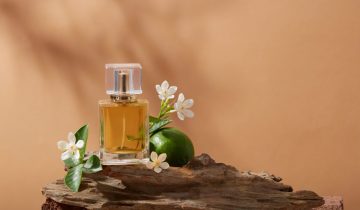🌟Table of Contents🌟
- The Floral Lexicon
- Blossoming Vocabulary: Key Descriptive Words
- The Aesthetic Allure: Visual Descriptions of Flowers
- A Symphony of Scent: Olfactory Descriptions
- Petal Poetry: Literary Allusions to Flowers
- The Exotic Lexicon: Words from Other Languages
- Speaking the Language of Flowers
The Floral Lexicon
In the fascinating realm of nature, flowers take the limelight, holding their own vibrant dictionary of descriptions. As we embark on this journey into the world of flowers, we’ll explore a plethora of descriptive words, evoking visuals, scents, literary references, and exotic terminology from around the globe. Delight in the essence of the floral world, as we bridge the chasm between words and the raw beauty of these earthly wonders.
Blossoming Vocabulary: Key Descriptive Words
Petrichor – The pleasant scent that frequently accompanies the first rain after a long period of warm, dry weather, often associated with blossoms.
Effloresce – The action or process of developing and unfolding as if into a flower, blooming.
Viridescent – Slightly green; greenish.
Melliferous – Producing or yielding honey; used to describe nectar-laden flowers.
Pulchritudinous – Of remarkable beauty; usually used to describe particularly attractive flowers.
The Aesthetic Allure: Visual Descriptions of Flowers
We now delve into the visual beauty of flowers, painting pictures with words that capture their magnificence. These descriptions can transport us to a field of sunflowers, a grove of cherry blossoms, or a bouquet of irises.
Opulent petals: Describing the lush, full petals of a flower.
Gossamer veil: The delicate, translucent covering of dew on a flower at dawn.
Starburst stamen: An interesting way to describe the central part of the flower, radiating like a star.
Luminescent lily: Alluding to the bright, almost glowing quality of some lilies in the sunlight.
Iridescent iris: Referencing the multi-coloured, shifting sheen on some iris petals.
A Symphony of Scent: Olfactory Descriptions
Next, we’re ushered into the world of scents. These descriptive words encapsulate the fragrances, allowing the mind to imagine the sweet, the spicy, the fresh, and the intoxicating aromas that emanate from flowers.
Ambrosial: A divine, delicious, or fragrant smell.
Balmy: Having the qualities of balm; soothing, refreshing.
Redolent: Strongly reminiscent or suggestive of something, often used to describe the potent scent of flowers.
Piquant: Having a pleasantly sharp or appetizing flavor, often used to describe uniquely tangy floral fragrances.
5. Noisome: Having an extremely offensive smell; this might seem unusual, but some flowers, like the Corpse Flower, are known for their unpleasant odors!
Petal Poetry: Literary Allusions to Flowers
Literature, across cultures and ages, has found an inexhaustible source of metaphors and symbols in flowers. Here are some of the most potent and poetic expressions that breathe life into floral imagery.
“A rose by any other name would smell as sweet” – This quote from Shakespeare’s Romeo and Juliet embodies the notion that the intrinsic qualities of something are more critical than its name.
“Do not watch the petals fall from the rose with sadness, know that, like life, things sometimes must fade, before they can bloom again.” – This quote encapsulates a profound life lesson about the ephemeral nature of existence and the promise of rebirth.
“Flowers… are a proud assertion that a ray of beauty outvalues all the utilities of the world.” – This Ralph Waldo Emerson quote reflects the notion that beauty holds a distinct, irreplaceable value.
“I will be the gladdest thing under the sun! I will touch a hundred flowers and not pick one.” – Edna St. Vincent Millay’s words capture the appreciation of beauty in its natural environment.
The Exotic Lexicon: Words from Other Languages
Floral vocabulary isn’t restricted to English. Many cultures have distinct words to describe the nuances of flowers. Exploring these adds a new dimension to our understanding.
Hanakotoba (Japanese): The language of flowers in Japanese culture, where different flowers and their colors represent different emotions and messages.
Flora (Latin): The word flora is used in botany to refer to plant life in a specific region or period.
Fleur (French): The French word for flower, used in English mainly in the names of plants or perfume.
Fiore (Italian): The Italian term for flower, often used poetically.
Blomst (Danish): The Danish term for a blooming flower.
Speaking the Language of Flowers
Our journey through the language of flowers reveals a mesmerizing world, where words bloom like the subjects they describe. We have explored a variety of descriptive words, offering us countless ways to communicate the beauty and intricacies of flowers. We have delved into visual, olfactory, and even global explorations of floral lexicon, leaving us richer in our understanding and appreciation of these natural wonders.
Whether you’re a horticulturalist, poet, or simply a lover of flowers and words, this exploration into the language of flowers should serve as a valuable resource, enhancing not just your vocabulary but also your ability to perceive, appreciate, and convey the ethereal beauty of these botanical gems. Indeed, language, when aptly employed, can blossom as beautifully as the flowers themselves. So, let’s continue to nurture our love for both, reveling in the words that capture the soul of these floral marvels.







 No products in the cart.
No products in the cart.